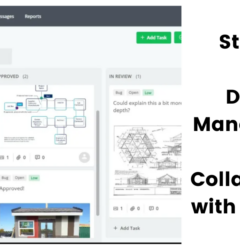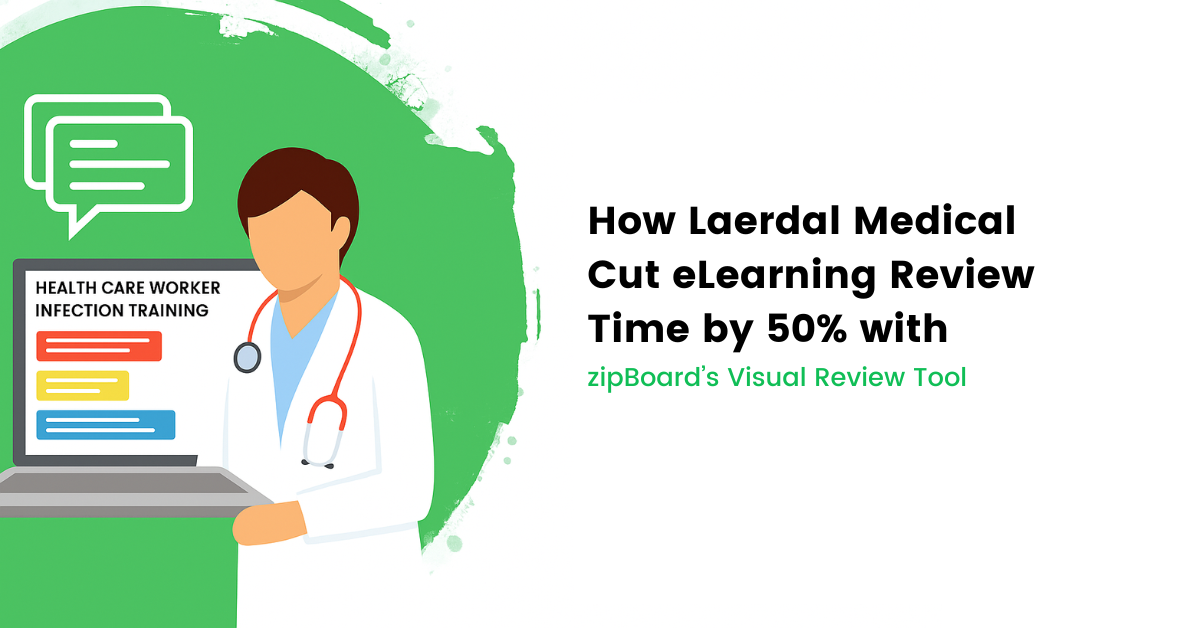Developer-stakeholder collaboration | in conversation with Tobias Schoep
13 Oct

Table of Contents
ToggleTobias Schoep is a scientist, a research administrator, and the general manager of Grow Impact Pty Ltd, an organization that helps research organizations show their stakeholders how their support is making a difference. Based out of Perth, Australia, the software solution provided by Grow Impact helps build meaningful relationships with funders and stakeholders. Their software solution is used by both researchers and stakeholders to understand the progress made and the amount of change brought on through their work.
Tobias and his team wanted a tool to level up their developer-stakeholder collaboration. A tool that can be easily used by their non-technical stakeholders so that they can collaborate better with the developers during the course of software development. While working with technology developers and non-technical stakeholders, a good communication tool is fundamental to improve software development collaboration.
The challenges faced by Grow Impact Pty Ltd
Before zipBoard, Grow Impact used the concept of “work orders”, a robust but traditional way of remote collaboration. These were used to inform the developers about the changes to be made and the same route was followed to update the stakeholders.
As it can be guessed, this form of developer-stakeholder collaboration was time-consuming, tedious, unclear, and inefficient. A lot of time was invested in communicating as things needed to be detailed. It made managing tasks and planning sprints more challenging. Remote collaboration and backlog prioritization weren’t getting any easier either.
Because of this challenge in developer-stakeholder collaboration, both of the teams had to struggle and wait longer than necessary to get the relevant information to move forward. Furthermore, it was intensified due to the language barrier between the developers and the stakeholders. Understanding long texts from each other via emails that contained industry-specific terms is difficult and it was the case for the Grow Impact team too.
The impact of the challenges
Delays are simple. A few more business days, a few more calls, a few more sprints and that’s all. Delays are predictable, even during remote collaboration, but it wasn’t just delaying that Grow Impact’s team had to deal with.
The biggest challenge is circumventing the communication gap in the developer-stakeholder collaboration since both of them belong to different worlds. Translating detailed messages ridden with industry-specific terminologies into an actionable strategy is not easy. Simultaneously, for the developers, it was difficult to understand what was being desired and what needs to be iterated upon.
The next issue that was faced in this scenario was information leaks. Communicating via emails and messages means once, in a while, things will be lost in the mix. Bug and issue tracking become more challenging when all of the messages are shared in one long chain. Even if there are multiple chains, it is hard to keep track of all of them. Furthermore, the priority and other details of the tasks or requirements, or demands will be in the gray area if it is discussed via email.
The three simple issues have drastic effects while considering the entire length of the project. Apart from unnecessary delays, the improper prioritization of tasks and unclear management will result in inefficient resource allocation. This will result in the sub-optimal quality of work in a scenario where developer-stakeholder collaboration is not fast. This will cost money, time, and quality in the short and long run, leaving the developers confused and stakeholders frustrated. Another ill consequence of this will be the unavailability of proper documentation because things will be difficult to find. If proper documentation or records of work is nowhere to be found, then bugs and issues will be repeated. Solving the same issues over and over again is the worst thing because it could have been easily avoided and it is costing the company valuable resources.
A good solution was needed by the team at Grow Impact Pty Ltd to make sure this kind of issue could be avoided.
The desired solution
Based on the challenges faced by the team at Grow Impact, they were in need of a solution that had the following properties:
- Easy to use by both developers and stakeholders
- That can track bugs and issues
- A tool that is visual for faster remote collaboration
- Backlog prioritization and task management
zipBoard’s role in developer-stakeholder collaboration
The first issue that was taken care of by zipBoard for the Grow Impact team was the difficulty in bug tracking. With zipBoard, bugs were visually tracked which prevented information leaks as the developers or stakeholders did not have to sift through email chains. This made their processes more efficient as their communication channels became more clear. Issues and bugs were easily trackable and this prevented the possibility of repetition of bugs.
The second benefit that Tobias and his team were able to get from zipBoard was the ability to manage their tasks and backlog properly. Assigning tasks, setting deadlines, and prioritizing specific things from the stakeholders was easier with zipBoard’s task manager. Furthermore, the visual Kanban Board improved the developer-stakeholder collaboration even more as it allowed both parties to get the entire update within a few minutes.
What made the process even smoother was the simple, intuitive, and easy-to-use UI of zipBoard that made remote collaboration between the technical team and non-technical stakeholders simple. There was no learning curve, no hour-long tutorials, no manual onboarding because it wasn’t necessary. The integrations of zipBoard also made it easier for their team to integrate it into their existing workflow.
Conclusion
While collaborating with technical and non-technical stakeholders remotely, communication and collaboration are challenging. The distance, difference in time zones, and the language barrier have a lot of effects. If unchecked, these obvious issues cause problems like unclear communication, improper task management, and slower progress. These problems, which are quite common, lead to suboptimal quality of work, wastage of resources, and delayed delivery. Not to mention, the probability of mistakes increases too.
A visual collaboration and bug tracking tool can solve all of the issues and prevent the dangerous outcomes of those issues. Tracking bugs, managing tasks, prioritizing the backlog, efficient developer-stakeholder collaboration are the requirements that zipBoard fulfilled for the Grow Impact team.
Recent Posts
- Best Practices for Efficient Document Reviews and Collaboration December 18, 2025
- MEP Document Management: How to Streamline Reviews & Avoid Rework October 3, 2025
- What Is Online Proofing Software? And Why Content Review Breaks Without It July 11, 2025
- How Laerdal Medical Cut eLearning Review Time by 50% with zipBoard’s Visual Review Tool July 9, 2025
- Why Your Team Needs a Content Feedback System (Not Just Comments in Docs) May 28, 2025
©️ Copyright 2025 zipBoard Tech. All rights reserved.


